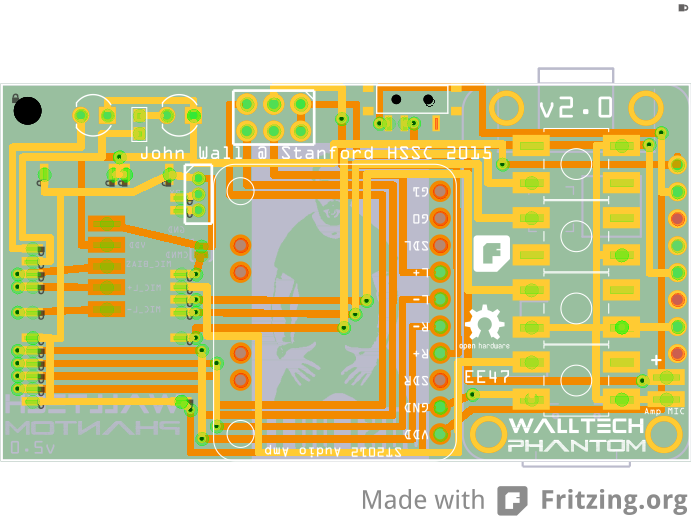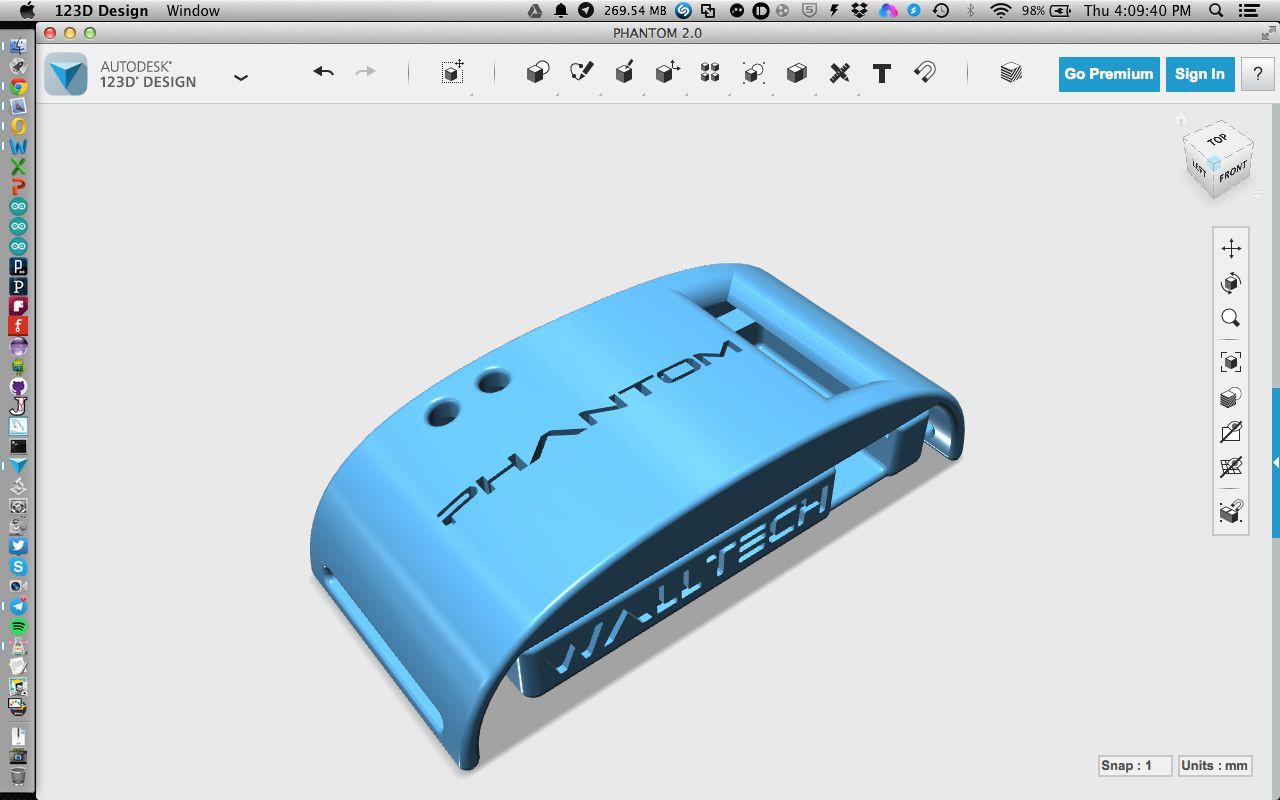I've finally found a way to work on the latest prototype of my bluetooth bone-conduction headset/hearing aid: by submitting the project as my EE47 final project at Stanford! My professor loves the project and as the class is an open engineering/design course, it satisfies the course's requirements. I'm free work on it in my EE lab and the Stanford makerspace, the Product Realization Lab, and parts should come in tomorrow for me to assemble the first prototype. I designed the PCB with Fritzing even though I wanted to upgrade my software this summer as it's quick, easy, familiar, and more than capable for this project. This new version of the bluetooth bone-conduction headset concept adds higher-quality components, better aesthetic design, a bigger battery, and more features. v2.0 has stereo microphones to receive bluetooth phone calls and add adaptive-volume hearing-aid functionality to the device. The four push buttons control volume up, play/pause, skip, and volume down functions in order from top to bottom. An internal amplifier boosts the volume to the transducers, an issue with the last prototype. The internal bluetooth audio module is a Microchip RN52, a VERY nice improvement over the $5 generic module from china in v1.0. Range should be increased as well as audio quality and the addition of microphone capability and status led feedback. Several people have asked for a 3.5mm audio jack to be included as an optional input, and at the scale of the internals of this device and the nature of its mounting, a wired connection would be impractical and against its intended use. If people really want one, I'll think about adding it into a future revision.
(yes, that's Shia Labeouf motivating on the back of the pcb, he's the Stanford EE47/ dorm mascot :) )

Once the PCB was complete, I used Autodesk 123D Design to 3D model a case to enclose the circuit board and components. The case will slide onto an adjustable or elastic band that will secure the device and transducers to the back of the user's head. The new shape is much more appealing than the last design, and the mounting style is simpler, more adjustable, and more user-friendly. I will eventually have this case printed in high-quality glossy white from Shapeways, but I might try the industrial 3D printers in the Stanford makerspace if they turn out to be cost effective. The main body of the case is 40x70x20mm.


My parts from Mouser and Adafruit should arrive tomorrow, then I can assemble and test all the cool features of this latest PHΛNTOM design! I can't wait to experience the eerie phenomenon of bone-conduction audio and show my friends and EE professor at Stanford!
 WΛLLTΞCH
WΛLLTΞCH
Discussions
Become a Hackaday.io Member
Create an account to leave a comment. Already have an account? Log In.